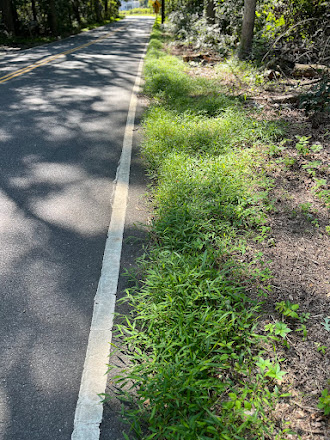Some plants have it all backward. Flowers are supposed to provide the show; the seeds, not so much.
But with pilewort, its the seeds that catch the eye, clustered in raggedy bunches that look like cotton.
The plant sets up great expectations as it grows and grows, fleshy like a large thistle, but soft and approachable,
with a pleasant scent when you crush the leaves. What fabulous flowers will crown all this vertical ambition?
Something looking like a flower bud appears, but it never generates anything resembling a flower with petals. Pollinators visit nonetheless, even though the flowers look like duds.
During our monthly nature walk at Herrontown Woods this past Sunday, I was grateful that one of the participants pointed out some other activity around the pilewort flowers. A common local ant species was busy tending to a flock of aphids sucking juice from the stems. The ants harvest the aphids' honeydew.
Pilewort (good luck with the latin name,
Erechtites hieraciifolius) is what I call a native weed. They pop up in large numbers in areas that have been disturbed, rising 8 feet high in what looks like a fleshy forest dusted with snow.
Maybe the name comes from the piles of seeds it deposits all around. Another common name for it is fireweed, because it sprouts abundantly after a fire has swept through.
You might think this plant a menace that will take over. The nonnative lambsquarters, also an annual, can give this impression too, growing densely and tall the first year after a disturbance. But I've learned not to be concerned over their dominant presence. The first year's show of abundance fades in subsequent years until you can hardly find a one. Other plants move in, and pilewort awaits the next disturbance.
2024 Update: Low and behold, the pilewort did not gracefully fade away this year. Having allowed it to go to seed last year, we are faced this year with a pilewort riot, requiring a sustained effort to pull it before it goes to seed again. Live and learn.






















